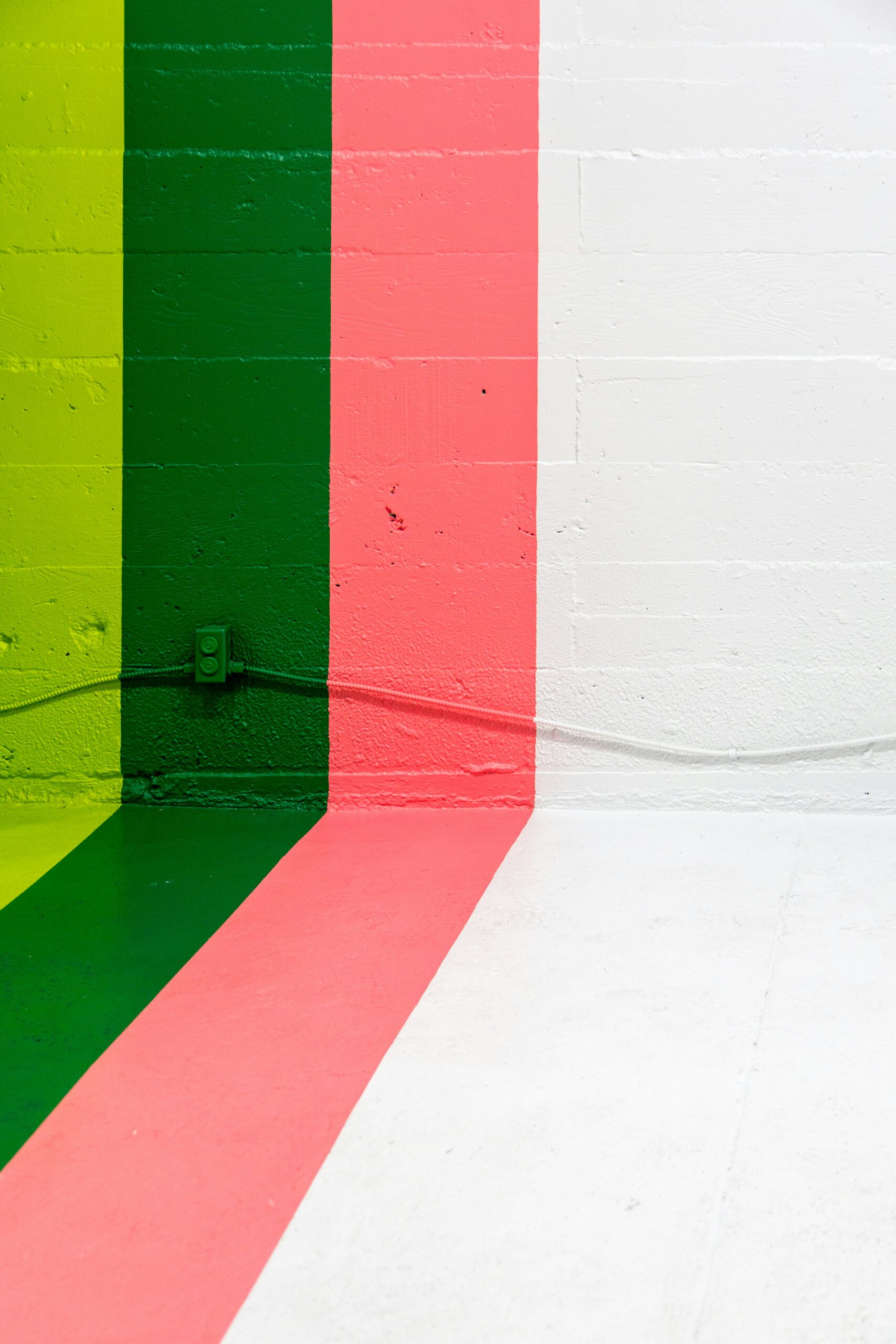In the bustling market of San Diego, standing out amongst a sea of commercial properties can be quite the challenge. Yet, one of the most powerful, yet underutilized, tools in enhancing commercial buildings is the strategic use of color. Color not only defines the aesthetic appeal of a property but also influences customer perception, potentially driving more business to your doorstep. Choosing the right commercial space colors can transform an ordinary space into an extraordinary one, making it crucial for real estate professionals looking to increase property appeal.
Understanding the Impact of Color on Commercial Spaces
The influence of color within commercial environments extends far beyond mere aesthetics, diving deep into the psychological and behavioral realms of those who interact with these spaces. Each hue carries its own emotional weight, capable of evoking specific feelings and actions from both employees and customers alike. For instance, serene blues and greens can cultivate a peaceful and focused atmosphere, beneficial in settings where concentration and calm are paramount. Conversely, the energetic pulse of reds or yellows can invigorate retail spaces, encouraging consumers to feel a sense of excitement and, consequently, be more inclined to make purchases.
Moreover, the strategic application of color can significantly enhance the functionality of a space. In bustling environments where clarity and navigation are key, contrasting colors can delineate different zones or highlight essential information, streamlining the user experience. This careful consideration of color can also contribute to branding efforts, with specific palettes reinforcing a company’s identity or ethos directly within the physical environment.
It’s essential to recognize the diverse roles color can play, from modifying spatial perception — making areas appear more spacious or cozy — to affecting the temperature feel of a room. Lighter colors can make a room feel cooler and more open, an ideal choice for smaller or warmer spaces, while darker tones can create a sense of warmth and intimacy, suited to expansive or cooler environments.
By harnessing the multifaceted impact of color, commercial spaces can be transformed to not only meet but exceed the functional and emotional needs of their occupants. This approach to color selection transcends simple decoration, positioning color as a pivotal tool in crafting engaging, productive, and appealing commercial environments.
Trends in Commercial Space Colors in San Diego
The dynamic landscape of San Diego is mirrored in its commercial space color trends, showcasing a blend that pays homage to both the natural and technological aspects of the city. Currently, there’s a discernible shift towards integrating earthy tones, with a special focus on biophilic design principles. This trend is largely inspired by the city’s unique coastal and desert landscapes, aiming to create spaces that reduce stress and foster a deeper connection with the environment. These palettes, featuring soft greens, muted blues, sandy beiges, and warm browns, promote a calming and rejuvenating atmosphere ideal for a variety of settings.
Parallel to this movement, San Diego’s commercial interiors are also experiencing an upswing in the use of bold and contrasting colors. This is particularly evident in sectors that thrive on creativity and innovation, such as technology startups, digital agencies, and creative studios. Vibrant hues such as electric blues, vivid greens, and radiant yellows are being strategically employed to energize spaces, stimulate creativity, and reflect the forward-thinking ethos of these industries.
Moreover, the adoption of contrasting color schemes serves not only an aesthetic purpose but also facilitates spatial differentiation within open-plan areas, thereby enhancing functionality. The thoughtful application of these trends underscores a broader understanding of how color can significantly influence both the feel of a space and its operational efficiency. As San Diego continues to evolve, its commercial spaces are becoming vivid representations of the city’s diverse character, melding natural inspiration with a dash of innovation-driven audacity. This nuanced approach to color selection in commercial design highlights a city that respects its roots while eagerly embracing the future.
Choosing the Right Color Palette for Different Commercial Uses
Selecting an optimal color palette for a commercial space requires a nuanced understanding of how different hues influence both the atmosphere of an environment and the behavior of its occupants. For corporate settings, a foundation of neutral tones supplemented with strategic accents of the brand’s colors can foster an ambiance of professionalism and warmth, enhancing both employee productivity and client comfort. Retail environments, on the other hand, benefit from brighter, more dynamic colors that can draw attention to merchandise, create energetic shopping experiences, and encourage consumer spending.
Wellness and healthcare facilities often leverage soft, serene colors like pale blues, greens, and lavenders to cultivate a restful and healing atmosphere, essential for patient recovery and staff efficiency. Restaurants and hospitality venues, aiming to create memorable and comfortable experiences for guests, might incorporate warm, appetizing colors such as reds, oranges, and earth tones, which can stimulate appetite and promote sociability.
In educational settings, color choices can significantly affect learning and concentration. Soft yellows and greens are known to enhance focus and efficiency, making them suitable for classrooms and study areas.
For each commercial use, the selection process involves more than just aesthetic appeal; it’s about aligning color psychology with the functional needs of the space to support and enhance the intended user experience. This tailored approach ensures that the color scheme not only resonates with the brand’s identity but also optimizes the space for its specific commercial purpose.
Tips for Implementing Your Color Scheme
Embarking on the journey of introducing a new color scheme into a commercial space begins with selecting a primary color that not only reflects the brand’s ethos but also sets the foundational tone for the desired atmosphere. This step should be followed by carefully choosing complementary or contrasting colors to serve as accents, which can enhance the overall aesthetic and contribute to the space’s dynamic feel. The impact of lighting on color perception cannot be overstressed; both natural and artificial light sources play crucial roles in how colors manifest within the environment, thereby influencing the mood and functionality of the space. When it comes to paint finishes, diversity in choices can add a unique dimension to the interiors. Matte finishes can soften and diffuse colors for a subtle effect, while glossier finishes might bring a vibrant energy to the area by reflecting light. Integrating these elements with thoughtfulness and precision ensures a harmonious blend that aligns with the commercial space’s goals and enhances its appeal to all who enter. It’s about creating a dialogue between color and light, texture and space, to craft an environment that not only looks appealing but feels aligned with the intended user experience. This thoughtful approach to implementing a color scheme can transform a commercial space, making it not only a place of business but a vibrant, inviting atmosphere that resonates with its occupants.
Overcoming Time Constraints in Color Makeovers
Navigating the hurdles of time-sensitive color updates in commercial spaces demands strategic planning and innovative solutions. Prioritizing efficiency without sacrificing the quality of the outcome is key. To tackle this challenge, a detailed project timeline should be established at the outset, identifying critical milestones and incorporating buffer periods for unforeseen delays. Employing quick-dry paint formulations is a smart approach that significantly reduces waiting periods between coats, thereby accelerating the overall project timeline. Additionally, the utilization of professional painting crews experienced in rapid deployments can further streamline the process. These teams often employ advanced techniques and work during off-peak hours, ensuring minimal disruption to daily operations. Focusing on impactful areas, such as feature walls or high-traffic zones, can deliver a pronounced aesthetic change without the need for a comprehensive color overhaul. This targeted approach not only conserves time but also allocates resources more efficiently, allowing for swift yet striking transformations. By adopting these strategies, commercial spaces can undergo a vibrant refresh that captivates and engages, all within the constraints of a tight schedule.
Case Studies: Successful Color Transformations in San Diego
San Diego’s commercial landscape offers a rich canvas for illustrating the profound effect of color on business environments. Among the myriad of success stories, two particularly stand out for their innovative use of color to catalyze change and growth.
A tech startup hub nestled in the heart of downtown San Diego decided to break away from the conventional tech office palette of neutral and cold hues. Instead, they embraced a bold combination of electric blues and dynamic greens, aiming to mirror the vibrancy and innovation at the core of the tech industry. The result was a space that not only fostered creativity among its occupants but also became a physical representation of the company’s forward-thinking ethos. This transformation was met with an overwhelming positive response, leading to an increase in tenant satisfaction and a noticeable uptick in the recruitment of top-tier talent.
Another significant transformation took place in a boutique hotel located near the city’s famed Gaslamp Quarter. The owners decided to revamp the guest rooms and common areas, moving away from a dated, monochromatic scheme to incorporate a mix of warm, welcoming earth tones and rich, inviting textures. This strategic shift aimed to enhance the guest experience by creating a more intimate and cozy atmosphere, drawing inspiration from San Diego’s natural landscape. Post-renovation, the hotel experienced a surge in bookings, particularly noted among visitors seeking a more authentic and immersive San Diego experience.
These case studies not only demonstrate the tangible benefits of thoughtful color selection in commercial spaces but also highlight the unique ability of color to align a physical environment with a brand’s identity and values, ultimately contributing to greater business success.
Future-Proofing Your Commercial Space with Color
Ensuring the long-term attractiveness and vibrancy of a commercial space requires a strategic approach to color selection. Opting for classic hues that gracefully weather changing trends provides a foundation that can effortlessly adapt over time. These timeless choices not only guarantee a lasting appeal but also afford the flexibility to integrate fresh, trendy accents as market dynamics evolve. This balance between enduring base colors and adaptable accent hues allows for periodic rejuvenation of the space without necessitating a full-scale color overhaul.
To maintain a forward-looking edge, it’s advantageous to lean into versatile color schemes that accommodate shifts in branding or thematic changes with minimal disruption. This adaptability ensures that the commercial environment remains aligned with current preferences while holding true to its core aesthetic. Additionally, an awareness of the prevailing and upcoming color trends within the San Diego market is invaluable. By staying attuned to these shifts, real estate professionals can preemptively adjust color strategies, securing their property’s relevance and appeal in a competitive landscape.
Embracing a future-proofing mindset with color involves a blend of timeless selections and flexible accents, supported by a keen awareness of market trends. This approach not only preserves the space’s aesthetic allure but also enables it to evolve, ensuring that it continues to resonate with occupants and visitors alike in the ever-changing commercial real estate market.
For tips and trends for your commercial office space, check out Work Design Magazine.




